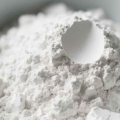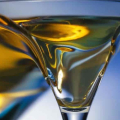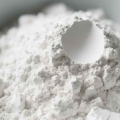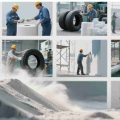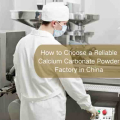- Welcome to China Calcium Carbonate Manufacturer
- WeChat:15078781000
- Introduction
- Core Manufacturing Processes
- Unique Physical Properties & Functional Advantages
- In-Depth Application Analysis
- 1. Paper Industry – Fiber Replacement & Quality Enhancement
- 2. Rubber Products – Reinforcement & Cost Efficiency
- 3. Plastic Modification – Functional Filling
- 4. Coatings & Inks – Performance Optimization
- 5. Pharma & Food – Safety Meets Functionality
- 6. Cosmetics & Sealants – Precision Solutions
- 7. Environmental & Emerging Fields – Sustainable Innovation
- Technological Trends
- About Us
Introduction
Light Calcium Carbonate (Precipitated Calcium Carbonate, PCC), a synthetic inorganic material, stands out as an environmentally friendly “industrial seasoning” with irreplaceable roles across paper, rubber, plastics, coatings, and dozens of other sectors. Compared to ground calcium carbonate (GCC), PCC boasts smaller particle size, higher surface area, and controllable crystal morphology. Its cost-effectiveness and adaptability to advanced manufacturing through functional modifications have solidified its position in green chemistry and nanotechnology. This article explores PCC’s production processes, unique properties, and cutting-edge applications while highlighting its scientific significance and industrial value.
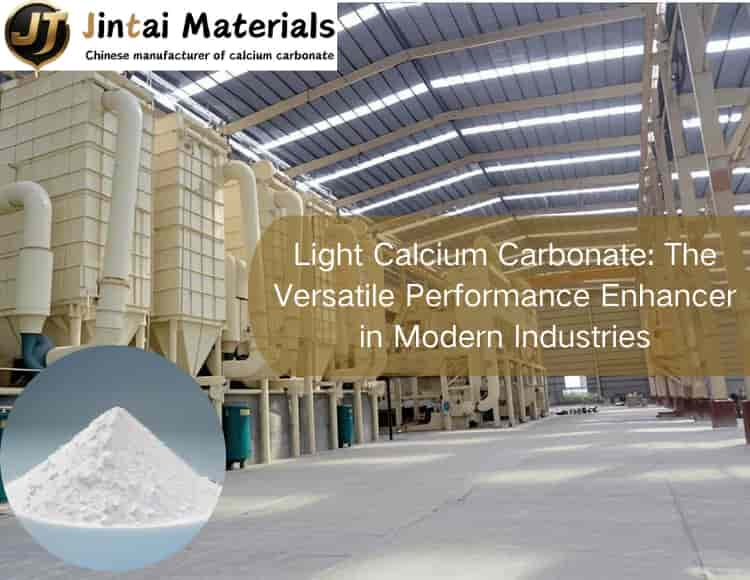
Core Manufacturing Processes
Light Calcium Carbonate production primarily relies on carbonation, supplemented by alternative methods:
Carbonation Method (Dominant Technology)
Using limestone as raw material, PCC is synthesized through:
Calcination: Limestone is heated to produce CaO and CO₂.
Hydration: CaO reacts with water to form calcium hydroxide (lime milk).
Carbonation: CO₂ is introduced to precipitate CaCO₃.
Post-processing: Dehydration, drying, and milling yield the final product.
This method ensures low-cost, large-scale production.
Soda Ash-Calcium Chloride Method
A double decomposition reaction between Na₂CO₃ and CaCl₂ directly generates CaCO₃. While simple, higher raw material costs limit it to niche applications.
Byproduct Recycling Methods
Caustic Soda Process: Recycles NaOH while producing PCC via lime-soda reactions.
Solvay Process: Co-produces PCC and ammonium chloride through ammonia-soda reactions.
Unique Physical Properties & Functional Advantages
PCC’s engineered microstructure delivers unparalleled performance:
High Functional Attributes
Porous Structure: Settling volume >2.5 mL/g (vs. GCC’s 1.1–1.4 mL/g), surface area ~5 m²/g, and oil absorption of 60–90 mL/100g.
Morphology Control: Adjustable crystal forms (spindle, cubic, spherical) for targeted applications. Spindle-shaped PCC mimics paper fibers, while needle-like crystals enhance rubber toughness.
Precision Classification
PCC is graded into:
Micron (>5 μm)
Fine (1–5 μm)
Ultrafine (0.1–1 μm)
Superfine (0.02–0.1 μm)
Nanoscale (<0.02 μm)
Uniform particle distribution enables nano-level functionality.
In-Depth Application Analysis
From traditional fillers to performance modifiers, Light Calcium Carbonate excels in:
1. Paper Industry – Fiber Replacement & Quality Enhancement
PCC reduces wood pulp usage by 20–30%. Ultrafine spindle-shaped PCC (0.02–0.1 μm) improves paper smoothness, opacity, and printability. For instance, coated paper with PCC achieves 40% sharper print edges.
2. Rubber Products – Reinforcement & Cost Efficiency
With 30–50% filler content, needle-like PCC boosts tear resistance by 15–20% in tires and seals while reducing heat generation.
3. Plastic Modification – Functional Filling
Nanoscale spherical PCC (<100 nm) in BOPP films enhances transparency (>90%) and surface gloss by 30%.
4. Coatings & Inks – Performance Optimization
Superfine PCC (8–10 m²/g) in anti-corrosion coatings delays substrate degradation. Cubic nanocarbonate (50–80 nm) improves ink dispersion, increasing edge clarity by 40%.
5. Pharma & Food – Safety Meets Functionality
Pharmaceutical-grade PCC (purity ≥99.5%) serves as calcium supplements and drug carriers. Food-grade PCC (Pb ≤3 ppm) stabilizes pH in dairy products.
6. Cosmetics & Sealants – Precision Solutions
Toothpaste-grade PCC (5–10 μm) cleans enamel safely. Nano-PCC in silicone sealants enhances aging resistance (tensile strength >1.2 MPa).
7. Environmental & Emerging Fields – Sustainable Innovation
PCC neutralizes acidic wastewater and captures heavy metals. In low-temperature ceramic sintering (600°C), it reduces energy consumption by 30%.
Technological Trends
Future advancements focus on:
Surface Modification: Stearic acid or titanate coupling agents for better polymer compatibility.
Medical-Grade PCC: Porous carriers for targeted drug delivery and bioimaging.
Carbon-Neutral Production: Utilizing industrial CO₂ emissions for carbonation.
About Us
As a leading Calcium Carbonate Manufacturer, Jintai specializes in high-performance Light Calcium Carbonate (PCC) solutions tailored to diverse industries. Our products combine cutting-edge nanotechnology with sustainable practices, ensuring quality, consistency, and environmental responsibility. Explore our PCC portfolio to discover how Jintai elevates your manufacturing processes.
